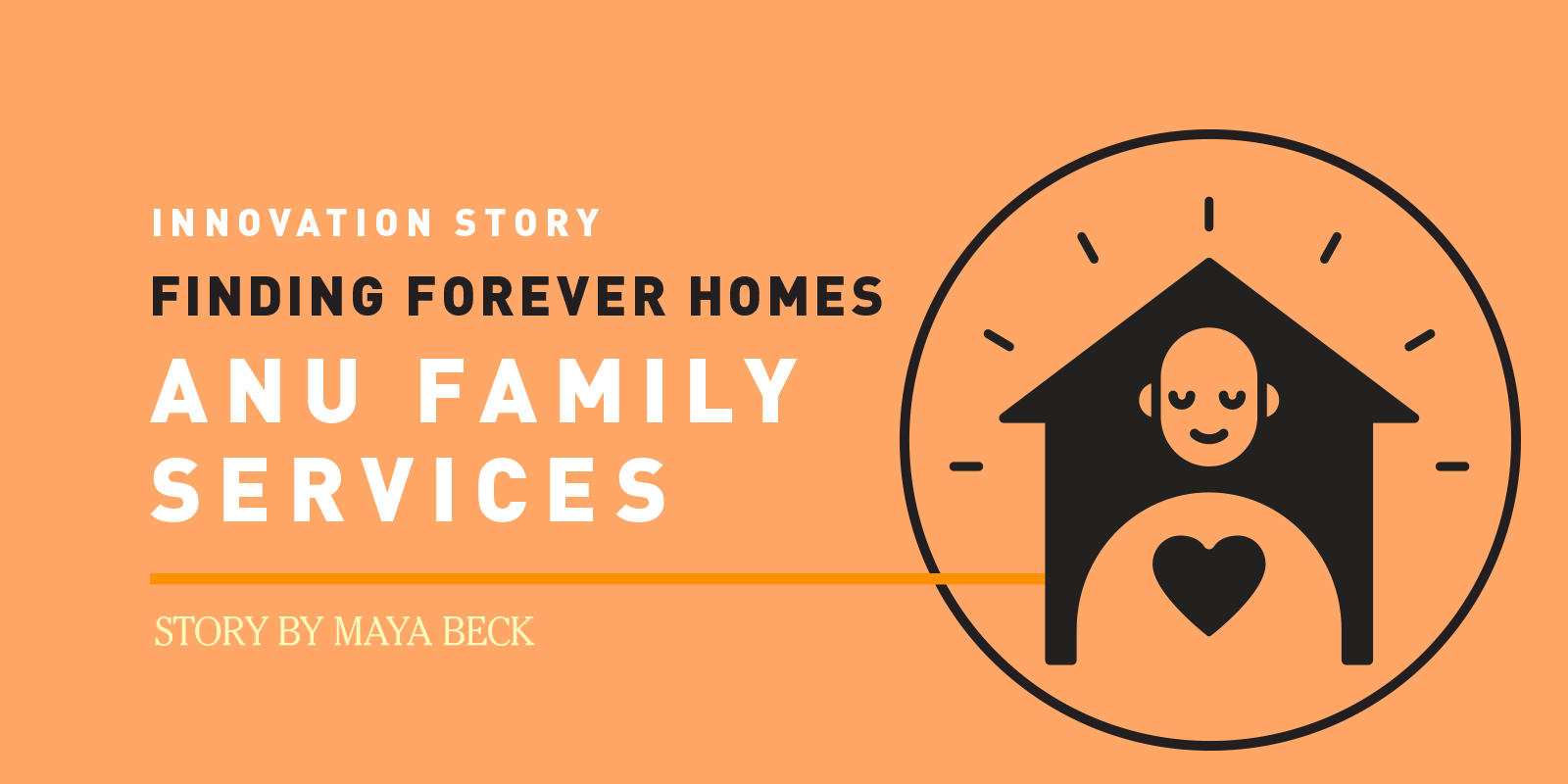
Anu Family Services is a recipient of the Bush Foundation’s Bush Prize for Community Innovation.
A BLACK PLASTIC BAG. That is what many foster children use to pack up their belongings before moving from one house to the next. The average foster child moves more than seven times before the age of 18. Biological relatives appear and disappear, are forgotten or unreliable. Promising foster families grow overwhelmed and give up, and give the kids back. Once they reach the age of 18, foster kids are on their own. Anu sets out to change this experience for foster kids by helping them find a forever home.
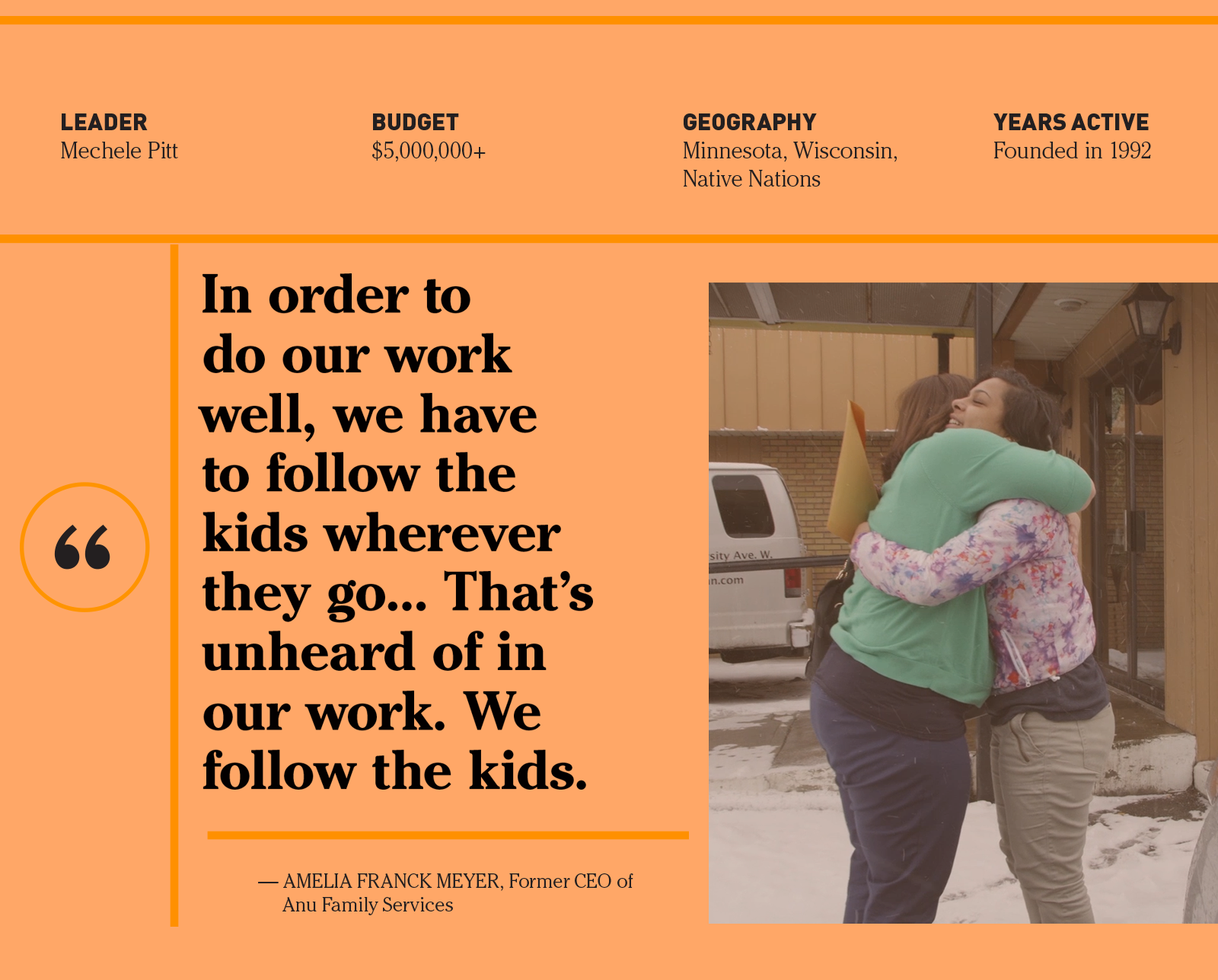

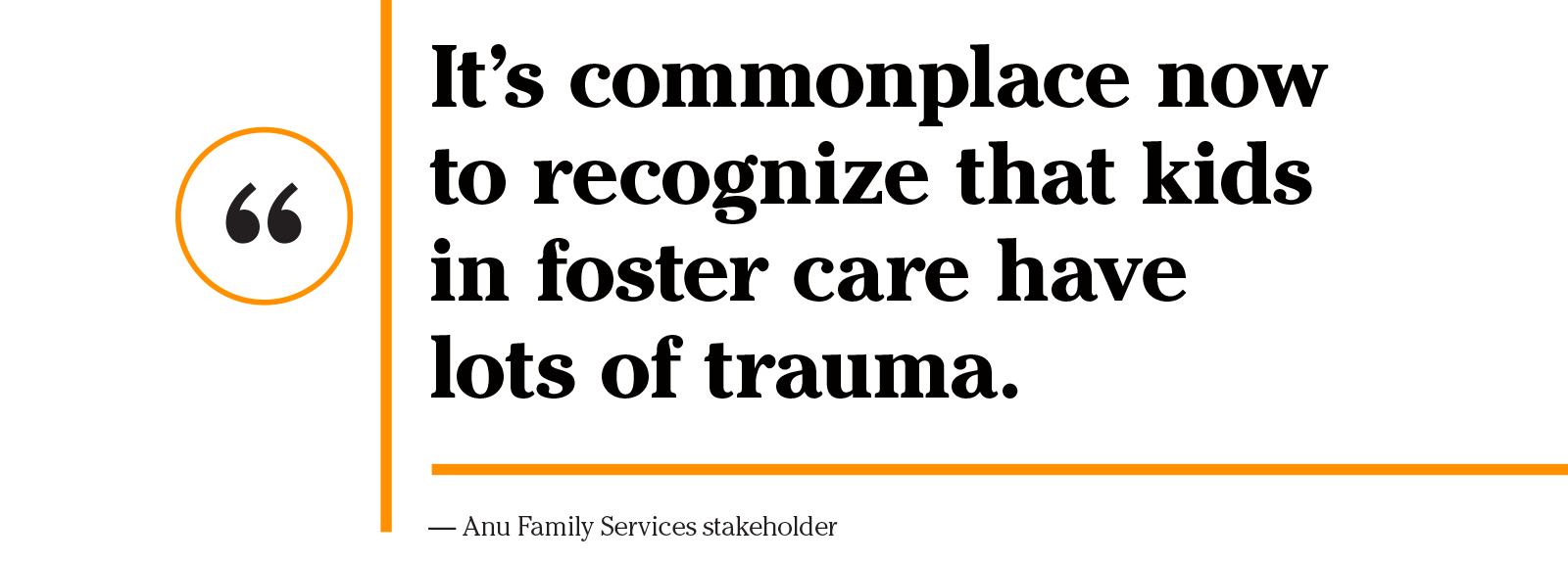
Through an intensive process to transform its work, Anu declared an audacious goal: to serve as the last placement prior to a permanent home for 90 percent of its kids. This was unheard of in the foster care system. At the time, Anu’s permanence rate was only 38 percent, and there was no business model to reach this new goal. Anu decided to work backward from the community need, even if it meant totally changing the way they did their work. Today, Anu has a permanent placement rate of 70 percent, double the previous rate of foster kids placed in forever homes.
Mechele Pitt, Anu’s CEO, integrates TRIZ, a Russian problem-solving model, to find solutions. (The acronym only works in Russian, but it roughly means “Theory of Inventive Problem- Solving,” or TIPS.) It’s a counterintuitive way of working. The first step is to outline what one would do to make a child fail in the welfare system: over-medicating them, moving them from school to school, refusing to listen to their needs. This exercise highlights everything Anu should not do.
One of the central principles of TRIZ is the idea that one can develop creativity logically. Start with what’s known about the problem, find similar problems in different fields and adapt the solutions in a way that suits the problem at hand.
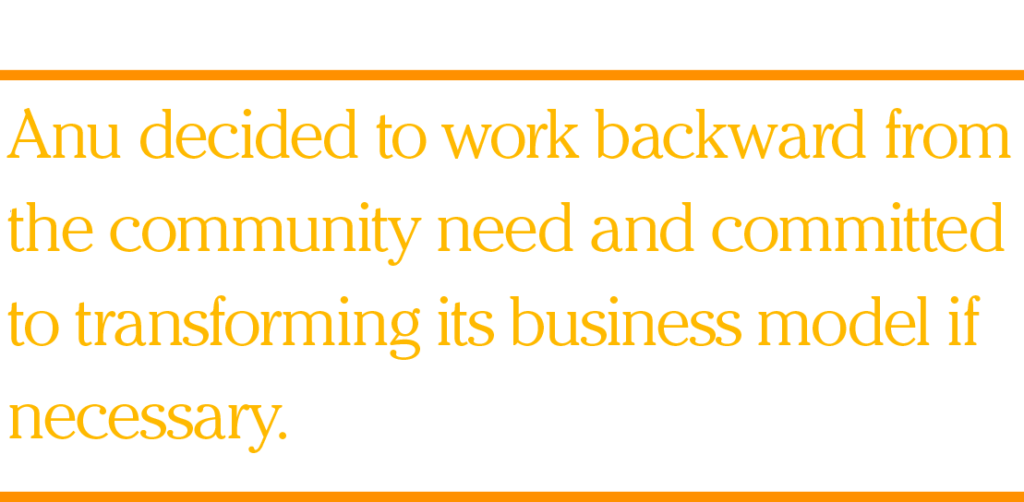
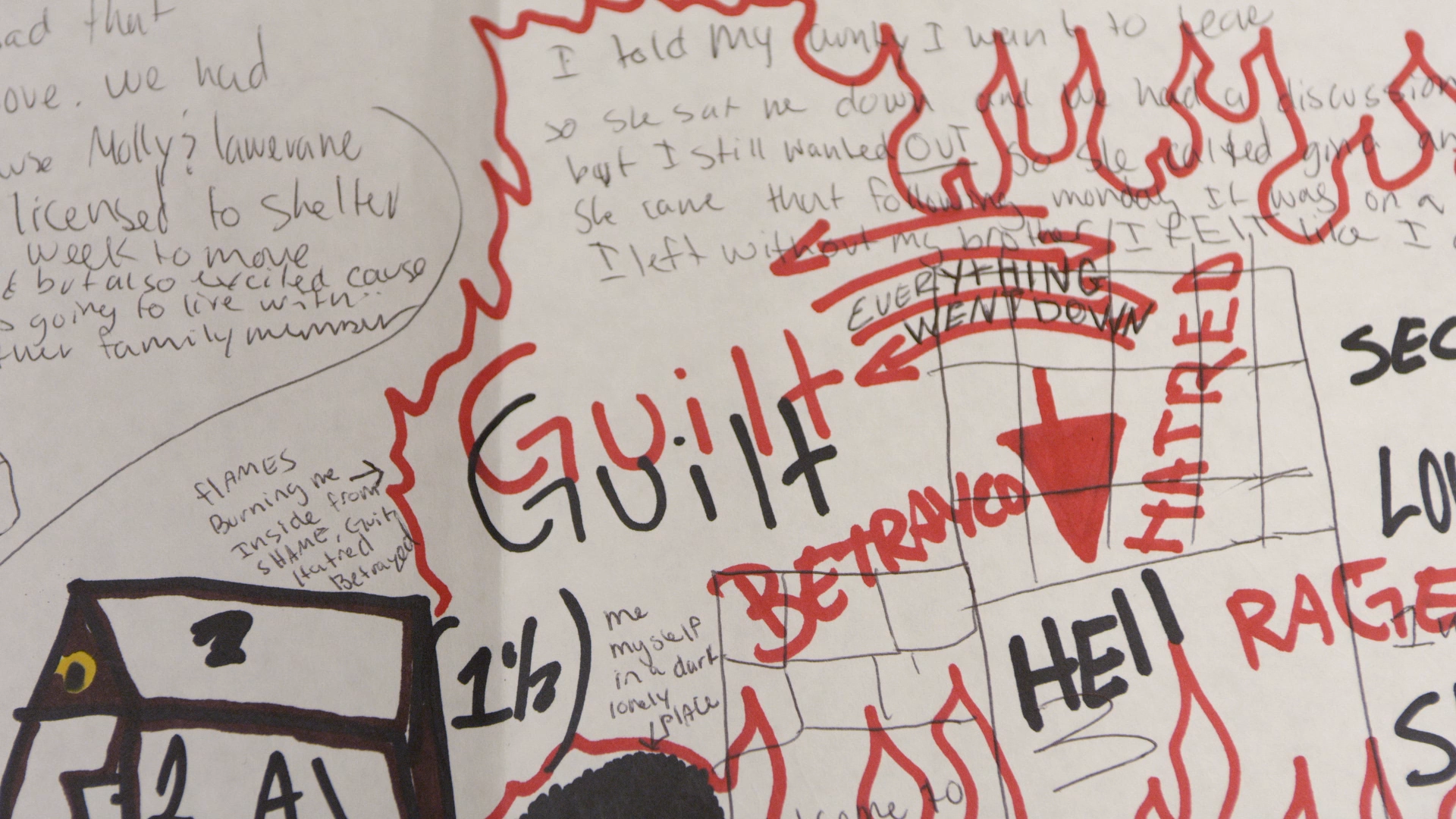

Other organizations may focus on making the best decisions for the kids, but Anu’s youth-driven process lets the kids determine their own needs and ideal living situations. Anu then works to make the living situation safe and healthy. Anu’s “family finders” conduct an exhaustive search that flips the foster care model on its head. They let kids identify important adults as potential caretakers in possible permanent homes. Family finders lead in-depth searches to identify the adults most likely to value the welfare of the kids.
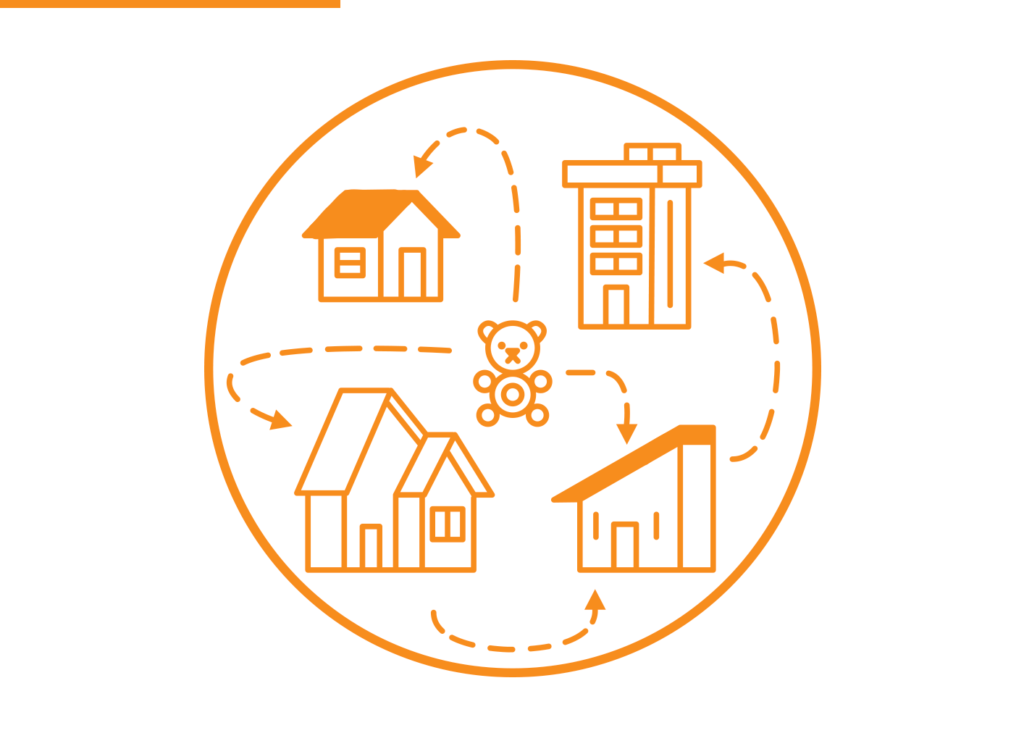
Anu consults the kids to identify positive role models who are already a part of their lives, such as teachers, caring neighbors and mentors. These connections may not be able to foster a child, but can provide support in other areas. The goal is to develop a support network to ground the children.
Former CEO Amelia Franck Meyer explains, “In order to do our work well, we have to follow them wherever they go. They can move to Bemidji to a group home, and we show up there. If they wander away from the group home and they show up in detention in Iowa, we show up there. That’s unheard of in our work. We follow the kids.”
The kids have the power to hire and fire a caseworker who does not meet their unique needs. During frequent check-ins, Anu encourages kids to rate their satisfaction with their living situations. The older kids answer questions on cleanliness, trustworthiness and safety, grading each from “A” to “F” on a report card. Younger kids select smiley faces or frowny faces in response to questions such as, “Do your parents do what they promise?” and “How does the food taste?” Anu uses the report cards to facilitate conversations between kids and their foster parents.
Anu also prepares prospective foster parents to be responsive and compassionate. Anu offers 24-hour support, connects foster parents to peers and emphasizes the nature of their role as “healing foster parents.” Foster kids often have histories of abuse, neglect and trauma, which often result in behavioral challenges. Well-equipped foster parents will respond to their kids with affection, never punishment or control; Anu provides specialized training to build these skills.
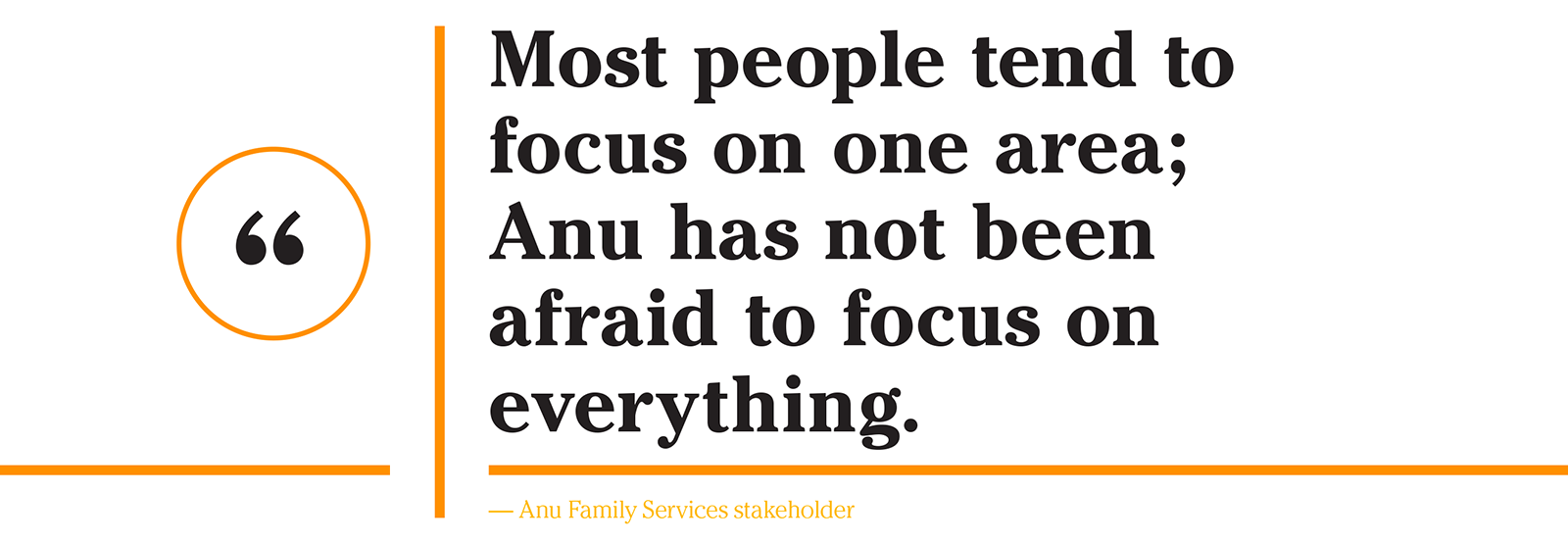

Mechele sees Anu as a machine of many parts. It must be tuned and regularly checked to pass inspection. All of its components, whether staff or clients, must be in good working order. To support the children, the staff must also be healthy. Anu intentionally focuses on work culture to be more employee friendly.
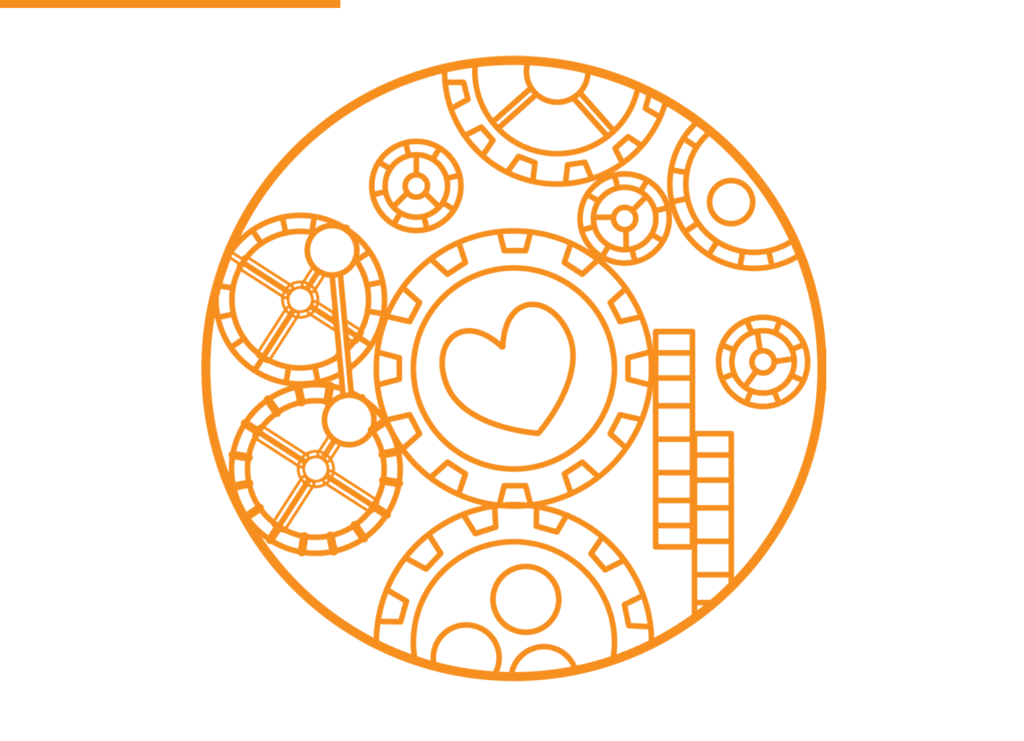
Turning the tables on the exit interview, Anu holds one-on-one “stay interviews” to investigate the reasons why workers choose to stay. It asks questions ranging from “What kinds of flexibility would be helpful to you in balancing your work and home life?” to “What talents, interests or skills do you have that we haven’t made the most of?” Based on the responses, Anu will offer employees professional development opportunities or invite them to use their photography skills to liven up the website. The final question is simply, “Why do you choose to stay?” Staying in a job as intense and emotionally demanding as foster care placement brings secondary trauma.
Staff can take “well days” off before they need a sick day. Anu also implements Employee Well-Being Scorecards that measure work/life balance, employee retention, vacation days lost, average tenure and other dimensions of health. The high marks these scorecards capture demonstrate Anu’s dedication to the mental and physical well being of its employees. Something as simple as self-care contributes to high employee engagement, low turnover and burnout, and less bouncing around for the staff as well as the kids they serve.
ABOVE: MECHELE PITT, ANU
For Mechele, it’s about more than just fine tuning Anu as an organization; it’s also about transforming the child welfare system. From empowering kids to advocate for themselves, to focusing on everything that supports healthy kids, families and employees, Anu tamed its big, hairy, audacious goal and now more foster kids will have the forever homes they deserve.
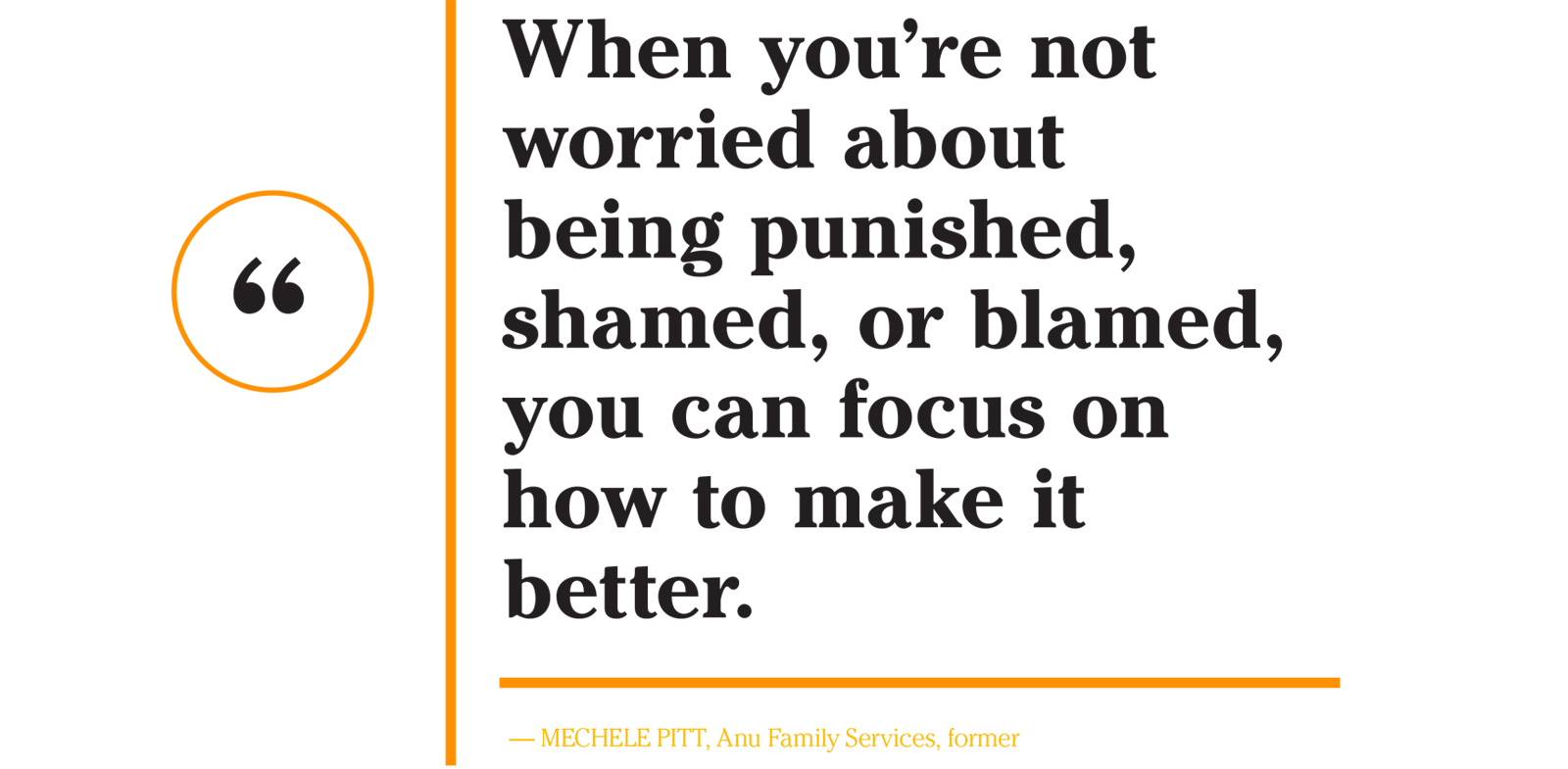
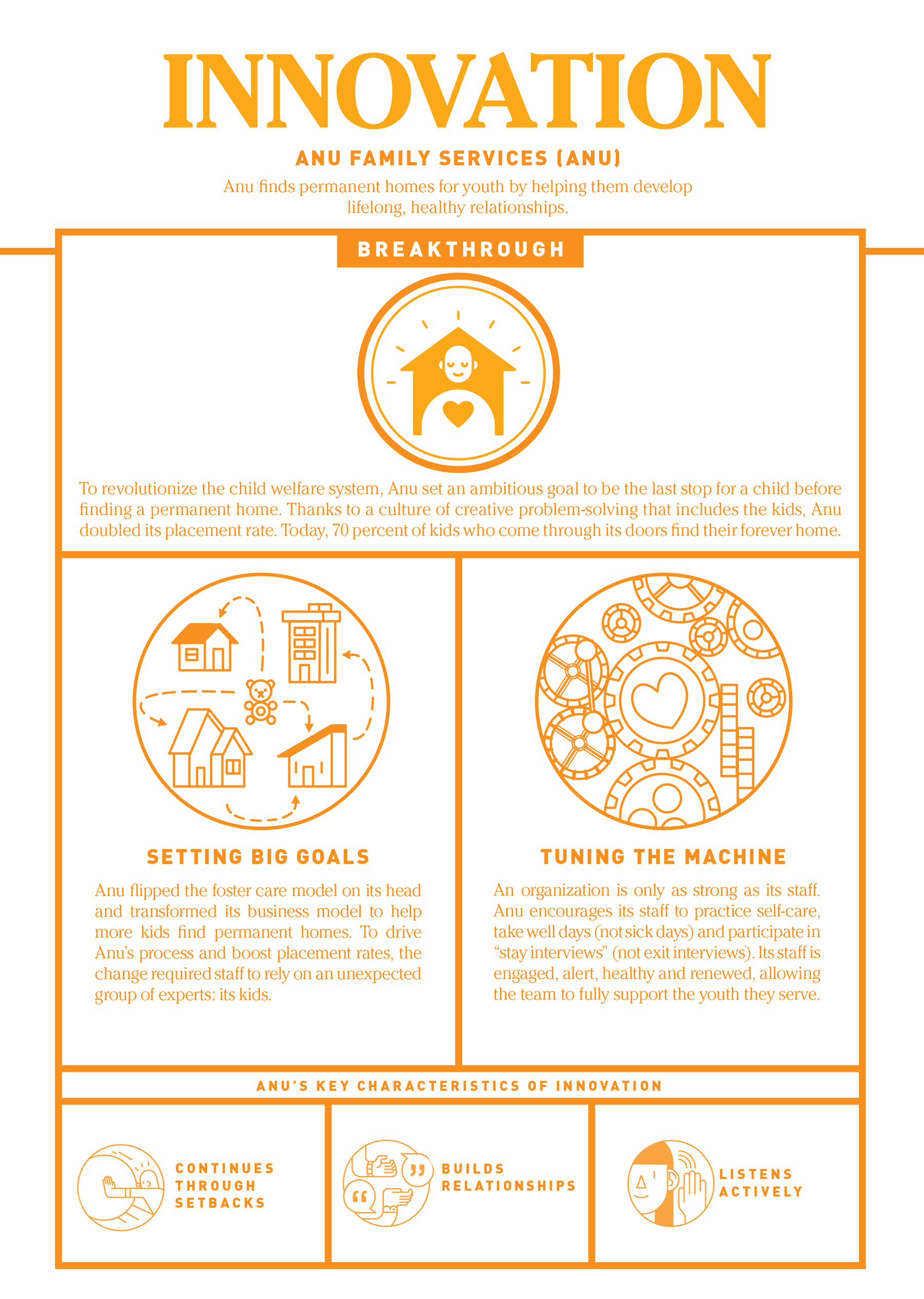

Produced in partnership with the Bush Foundation
to showcase the culture of innovation
behind its Bush Prize winners.
Contributors



